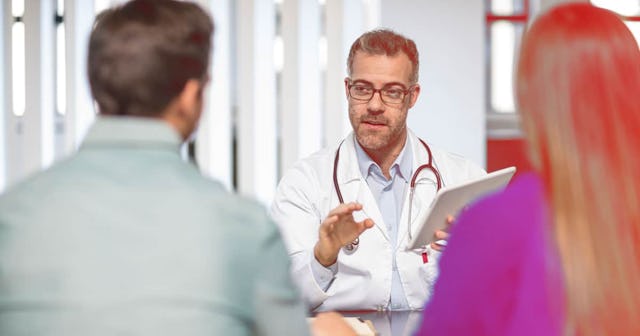To Doctors, My Fertility Was More Important Than My Pain

“Are you sure you’re done?” my doctor said to me. “You’re still young.”
I had been fidgeting with my hands, rubbing the space between my fingers one by one, when I felt my hands ball up into tight fists and release. Here I was in front of a gynecological specialist I’d traveled more than two hours to see, and he had spent the first five minutes of our conversation asking me about my dating and sex life. Informing him that I’m currently going through a divorce was enough to move the conversation about my chronic back and pelvic pain, frequent periods, and family history of reproductive cancers to concerns about whether I’d ever have babies again.
Yes, I was absolutely sure. My road to fertility was long and bumpy, and my pregnancy was no walk in the park. I was 31 when my then-husband and I decided to try to get pregnant. It had been more than 10 years since my first pregnancy, which happened much too easily. This time, after more than a year of trying to conceive, I decided to seek help from my gynecologist. After tests, ultrasounds, several appointments, and a laparoscopic procedure, I was diagnosed with endometriosis — a disorder that causes the lining of the uterus to grow outside of the uterine cavity. Turns out, endometriosis is not only a common cause of secondary infertility, it had been the cause of the debilitating painful pelvic pain my previous doctors had brushed off for years.
The pain felt like a shark bite to my insides and wasn’t limited to my period. It was accompanied by fatigue and bloating, and often sent me straight to bed for days. I knew it wasn’t normal, but — with the help of many doctors — had been convinced that it was. It was the culmination of a complicated relationship with pain. Strong Black women don’t complain about the pain. We just do our best through it.
When I was 25, I walked out of a top teaching hospital in Chicago with head and back pain so severe I couldn’t hold my head upright. I didn’t, in fact, receive any treatment or medicine. I was sent home with instructions to take a few ibuprofen and later ended up in a different hospital, where it was determined my spinal fluid was slowly leaking and needed to be patched. I could have died, but years of being sent away by doctors taught me that protesting too much was a waste of energy.
Now, after two surgeries to remove the endometriosis, I was finally in front of a specialist. I had severe left-sided pain that was undoubtedly caused by the left ovary adhered to my pelvic sidewall. I had come out of anesthesia years ago after my first surgery to remove the endometriosis to find that problematic ovary still there, still adhered. My OB-GYN wanted to save it to give me a better chance at pregnancy, even though I know now many women get pregnant just fine with only one ovary. This time, though, I didn’t want anything saved except my sanity. I wanted the pain gone, and I wanted every remaining piece of my jinxed reproductive system out. I wanted to be able to sleep through the night, play with my four-year-old without doubling over, and not dread every single change associated with each cycle phase.
“I’m sure,” I said. “Take the fallopian tube, uterus, ovary, and whatever other damage you find.” The images from my ultrasound were on full display behind us. There was my fallopian tube, clear as day and filled with an unknown mass. “Technically, a normal fallopian tube isn’t large enough to be seen on ultrasound,” the doctor had said just minutes before my fertility became the topic of discussion. Technically, I shouldn’t be able to (or have to) feel my fallopian tube either, but I do. He spent a few more minutes clicking through photos and talking very quickly about conservative options that included taking medications for an indefinite amount of time with a high risk of having nightly sweats and hot flashes.
I drove home confused about how, once again, I’d let a doctor throw a Band-Aid at my suffering. This time I wasn’t going to be gaslit. I wanted a do-over. I called and I left a message demanding we take a closer look at what was going on because none of it feels normal. I put my pain in words the best way I could through the tears that had come to my eyes. The nurse called me back to schedule a CT scan. The results showed a suspicious “thickening” in the lining of my uterine wall and some fluid in the pelvic cavity to add to the list of masses and painful situations the ultrasound uncovered. Now we could proceed with the surgery to remove my uterus, tubes, and ovary.
To doctors, women’s fertility is often more important than our reproductive pain. I had to take whatever comfort I could from the fact that at least my life took precedence over whether I could change my mind about having more babies or not.
This article was originally published on